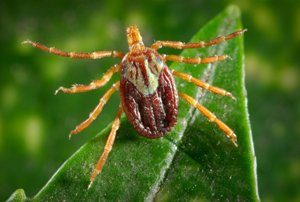
Indianapolis, In. — Indiana health officials are encouraging Hoosiers to protect themselves from tick bites while outdoors as warmer temperatures bring an increase in tick activity across the state.
Ticks are small, insect-like creatures that are found throughout Indiana in grassy and wooded areas. They tend to be most active during the late spring and early summer. Recent field sampling by the Indiana State Department of Health (ISDH) has detected that ticks are already active this year.
“This is the time of year when we start to see the risk for tick-borne diseases increase,” said State Public Health Veterinarian Jennifer Brown, D.V.M., M.P.H. “The best way to protect yourself and your family is to prevent tick bites and conduct frequent tick checks during and after outdoor activities, whether you’re in the woods or in your own backyard.”
Indiana ticks can carry the bacterium that causes Lyme disease. In addition to Lyme disease, ticks can transmit a variety of other diseases, such as ehrlichiosis and Rocky Mountain spotted fever. In 2017, Indiana reported more than 250 cases of tick-borne illness.
Hoosiers can reduce their risk of tick bites by:
- Wearing a light-colored, long-sleeved shirt and light-colored pants, with the shirt tucked in at the waist and the pants tucked into socks, if they will be in grassy or wooded areas
- Treating clothing and outdoor gear with 0.5% permethrin, which is an insect repellent specifically designed for this purpose (permethrin should NOT be used on bare skin)
- Using EPA-registered insect repellents with active ingredients such as DEET, picaridin, IR3535, oil of lemon eucalyptus (OLE), para-menthane-diol (PMD) or 2-undecanone
- Treating their pets for ticks
Once indoors, people should thoroughly check for ticks on clothing, gear, pets and skin. Tumbling clothes in the dryer on high heat for 30 minutes will kill ticks, and showering can help remove any unattached ticks.
“Ticks usually need to be attached for several hours to a couple of days before they can transmit disease, so quickly finding and removing a tick can help keep you safe from disease,” Brown said.
Ticks may be safely removed by using tweezers to grasp the tick close to the skin and then pulling outward with steady and even pressure. After the tick is removed, the area should be washed thoroughly. The tick should be discarded by submerging it in alcohol, placing it in a sealed bag or container, wrapping it tightly in tape or flushing it down the toilet. Ticks should never be crushed with the fingernails.
Anyone who becomes ill after finding an attached tick should see a medical provider immediately and alert the provider to the exposure. Tick-borne diseases can be treated with antibiotics, and prompt diagnosis can help prevent complications.
For more information about ticks and how to prevent the diseases they carry, see the ISDH website at http://www.in.gov/isdh/20491.htm. You also can visit ISDH at www.Statehealth.in.gov for important health and safety information or follow us on Twitter at @StateHealthIN and on Facebook at www.facebook.com/isdh1.



